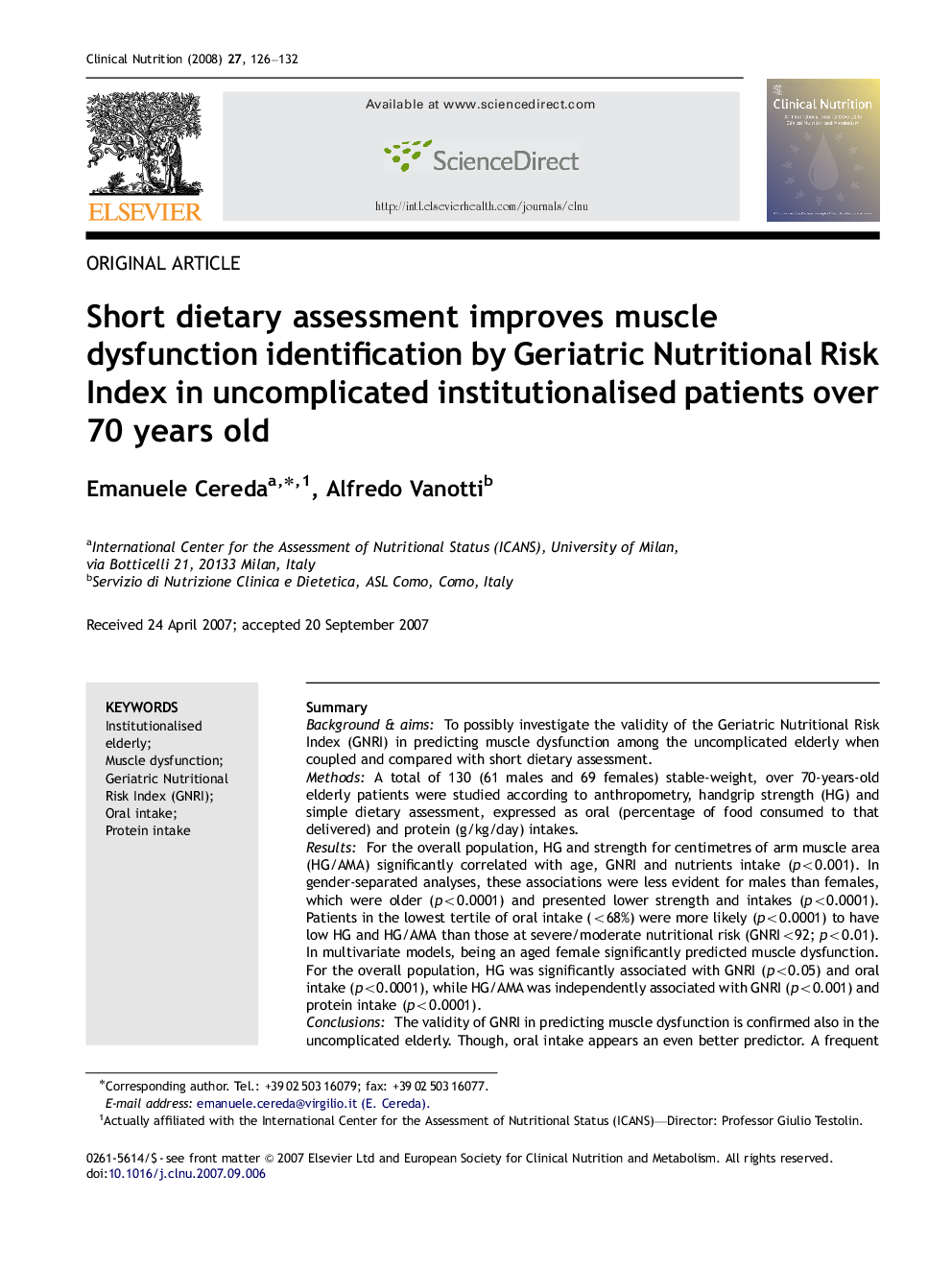| کد مقاله | کد نشریه | سال انتشار | مقاله انگلیسی | نسخه تمام متن |
|---|---|---|---|---|
| 2687752 | 1143041 | 2008 | 7 صفحه PDF | دانلود رایگان |

SummaryBackground & aimsTo possibly investigate the validity of the Geriatric Nutritional Risk Index (GNRI) in predicting muscle dysfunction among the uncomplicated elderly when coupled and compared with short dietary assessment.MethodsA total of 130 (61 males and 69 females) stable-weight, over 70-years-old elderly patients were studied according to anthropometry, handgrip strength (HG) and simple dietary assessment, expressed as oral (percentage of food consumed to that delivered) and protein (g/kg/day) intakes.ResultsFor the overall population, HG and strength for centimetres of arm muscle area (HG/AMA) significantly correlated with age, GNRI and nutrients intake (p<0.001). In gender-separated analyses, these associations were less evident for males than females, which were older (p<0.0001) and presented lower strength and intakes (p<0.0001). Patients in the lowest tertile of oral intake (<68%) were more likely (p<0.0001) to have low HG and HG/AMA than those at severe/moderate nutritional risk (GNRI<92; p<0.01). In multivariate models, being an aged female significantly predicted muscle dysfunction. For the overall population, HG was significantly associated with GNRI (p<0.05) and oral intake (p<0.0001), while HG/AMA was independently associated with GNRI (p<0.001) and protein intake (p<0.0001).ConclusionsThe validity of GNRI in predicting muscle dysfunction is confirmed also in the uncomplicated elderly. Though, oral intake appears an even better predictor. A frequent evaluation of its changes should be considered, particularly when concomitant high risk (GNRI<92) is scored.
Journal: Clinical Nutrition - Volume 27, Issue 1, February 2008, Pages 126–132